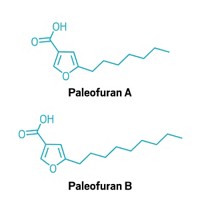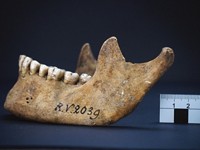Advertisement
Grab your lab coat. Let's get started
Welcome!
Welcome!
Create an account below to get 6 C&EN articles per month, receive newsletters and more - all free.
It seems this is your first time logging in online. Please enter the following information to continue.
As an ACS member you automatically get access to this site. All we need is few more details to create your reading experience.
Not you? Sign in with a different account.
Not you? Sign in with a different account.
ERROR 1
ERROR 1
ERROR 2
ERROR 2
ERROR 2
ERROR 2
ERROR 2
Password and Confirm password must match.
If you have an ACS member number, please enter it here so we can link this account to your membership. (optional)
ERROR 2
ACS values your privacy. By submitting your information, you are gaining access to C&EN and subscribing to our weekly newsletter. We use the information you provide to make your reading experience better, and we will never sell your data to third party members.
Microscopy
Understanding the ancient microbiome
Sequencing medieval latrines to build poo’s who of the medieval gut
by Laura Howes
October 10, 2020
| A version of this story appeared in
Volume 98, Issue 39

Kirsten Bos at the Max Planck Institute for Human History was skeptical when Piers D. Mitchell of the University of Cambridge contacted her. Mitchell and his team examine archaeological latrines under the microscope to identify intestinal parasites that lived in our ancestors’ guts. He wanted to know if Bos could use DNA analysis to get even more insight into the gut health of people who used two medieval latrines, one in Riga, Latvia, and one in Israel. Though DNA that old can survive for archaeological sequencing, it’s usually taken from bones or dental plaque, not from muddy poop pits. It turns out that Bos and PhD student Susanna Sabin were able to find DNA to analyze (Philos. Trans. R. Soc., 2020, DOI: 10.1098/rstb.2019.0576). Much of the DNA that Sabin found and sequenced was environmental, human or from parasites like tapeworms, but some was clearly from bacteria that make their home in the human gut. And some of those bacteria, such as Treponema succinifaciens, are often found in hunter-gatherers but not in industrialized populations. Bos says the work started as a proof of principle for the field. The plan now, she says, is to study additional latrines and fossilized feces, called coprolites, to understand more about gut microbiomes from the past.
Correction
This story was updated on Nov. 23, 2020, to correct the spelling of the bacterial species mentioned.




Join the conversation
Contact the reporter
Submit a Letter to the Editor for publication
Engage with us on Twitter